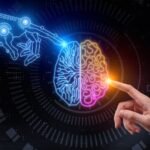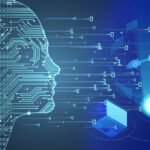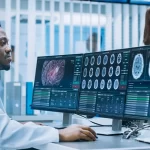Bias and Discrimination
/ /
Facial recognition technology has rapidly evolved, promising improved efficiency and convenience across various sectors. However, this powerful technology is not immune to biases and discrimination, potentially exacerbating societal inequalities. In this blog post, we delve into the ethical implications surrounding bias and discrimination in facial recognition technology. We explore the root causes of biases, their impact on marginalized communities, and discuss approaches to mitigate these issues.
- Understanding Bias in Facial Recognition Technology: Explain the concept of bias in AI systems, focusing on facial recognition technology. Discuss how biases can emerge during data collection, algorithm design, and decision-making processes. Highlight the potential consequences of biased facial recognition systems, including perpetuating stereotypes, unequal treatment, and reinforcing societal inequities.
- Racial Bias in Facial Recognition: Explore the well-documented racial biases present in facial recognition algorithms. Discuss instances where facial recognition technology has demonstrated lower accuracy rates for certain racial or ethnic groups, leading to false identifications or misidentifications. Analyze case studies and highlight the real-world implications of racial bias in law enforcement, surveillance, and other applications.
- Gender and Intersectional Bias: Examine the biases that affect gender identification in facial recognition technology. Discuss the challenges faced by transgender and non-binary individuals, as well as those with intersecting identities, when facial recognition algorithms fail to accurately classify or recognize them. Address the potential consequences of gender bias in areas such as identity verification, access control, and employment screenings.
- The Impact on Marginalized Communities: Explore the disproportionate impact of biased facial recognition technology on marginalized communities. Discuss how racial and gender biases can lead to increased surveillance, profiling, and discrimination. Highlight the potential harm caused by biased systems in law enforcement practices, access to public services, and social interactions.
- Root Causes of Bias in Facial Recognition: Examine the underlying factors contributing to bias in facial recognition technology. Discuss the role of biased training data, lack of diversity in dataset collection, and the potential influence of algorithmic design choices. Address the need for inclusive and representative datasets, as well as diverse development teams, to reduce bias.
- Ensuring Ethical Practices: Discuss the responsibility of developers, organizations, and policymakers in addressing bias and discrimination in facial recognition technology. Highlight the importance of transparency, accountability, and ethical considerations throughout the development lifecycle. Address the need for ongoing evaluation, bias testing, and algorithmic auditing to ensure fairness and mitigate discriminatory outcomes.
- Regulatory Measures and Policy Recommendations: Examine the role of regulations and policies in addressing bias in facial recognition technology. Discuss recent legislative efforts and proposals aimed at increasing transparency, accountability, and fairness in the deployment of facial recognition systems. Highlight the importance of regulatory frameworks that address bias, promote diversity, and protect individual rights.
- Mitigation Strategies and Technological Solutions: Explore technical approaches to mitigate bias in facial recognition technology. Discuss advancements in algorithmic fairness, explainability, and bias mitigation techniques. Highlight the importance of ongoing research and collaboration to develop and refine these solutions.
Posted in Blogs


































